When imagining cutting edge innovation, many Americans may picture scientists creating the COVID-19 vaccine or engineers at Tesla designing a first-of-its-kind electric truck. Many, however, would not imagine the drone delivery system in Rwanda that delivers blood and essential medical items to regions inaccessible by road, or Indian train cars converted into makeshift COVID-19 medical facilities. These “frugal innovations” are fundamentally different from most innovations developed in the U.S. as they aim to do “more with less” in resource-constrained contexts faced by many low- and middle-income countries.
The current pandemic has highlighted the necessity of applying similar innovations in the developed world. For example, the U.S. initially struggled to support communities in acquiring enough masks, personal protective equipment, and ventilators. A recent Nature Medicine article identifies frugal innovations used to address these challenges like 3D-printed ventilator multipliers that could provide urgent therapy for up to seven patients per ventilator machine, do-it-yourself cloth masks, and training community health workers for local contact tracing and COVID-19 testing.
These developments suggest a need for a reimagining of our approach to innovation. For example, drones are highly regulated and have restrictions to acquiring suitable flight permits. Furthermore, organizations like the Food and Drug Administration, although critical to population safety, can be slow in approving medications and medical devices. Even pro-competition antitrust laws that are important to ensuring competitive markets may prevent information sharing and collaboration between companies when rapid responses are needed.
These regulations are changing in the face of the pandemic. The Federal Aviation Administration (FAA) has allowed for drone use in select response efforts. The Centers for Medicare and Medicaid Services (CMS) is now allowing telehealth visits to be reimbursed during the duration of the pandemic. Even the Department of Health and Human Services has stated it will limit enforcement of strict patient privacy laws like HIPAA to ensure care access is not prevented.
Although these changes are not permanent, it is unlikely that the regulatory environment will return to pre-pandemic conditions, presenting opportunities to exploit. For instance, Simprints built a fingerprint-based tool to track the spread and treatment of neglected diseases. Without accurate information, it is hard to actively address communicable diseases. There are many marginalized populations in the U.S. who face similar challenges and only access the health system once they are already extremely sick.
These innovations extend beyond just the field of healthcare. In Kenya’s education technology space, M-Shule provides education access to students through text messaging. Using an AI algorithm, the company personalizes education for even poor and remote students, better preparing them to be successful during national examinations. Such creative solutions that promote social distancing may be even more important in the COVID-19 era.
Since innovations like these are being tested in settings much harsher than that of the U.S., they may find success domestically as well. Even the most advanced U.S. industries sometimes rely on a “less-is-more” approach. NASA and Lockheed Martin found that simply leaving off the white paint from early iterations of the space shuttle’s external fuel tank saved nearly 600 pounds of weight. Similarly, in the aftermath of 9/11, the FAA recognized that reinforcing cockpit doors and adding a door locking protocol were effective security measures to prevent repeat tragedies. Innovation can be simple.
Despite the vague nature of frugal innovations, it is possible to recognize some common themes. First, innovators should aim to build adaptable and flexible technologies that can be used in scarce contexts. M-Pesa, for instance, is a mobile-money transfer system that opened access to financial services for a significant portion of Kenya’s poor and rural populations. This tool has simplified banking services and reduced the need to visit a physical bank branch. Second, innovations don’t have to be sophisticated to be useful. Basic cloth masks are often sufficient to reduce viral spread instead of producing additional medical grade PPE. Lastly, innovators should consider the repurposing of current tools for new contexts, such as the hundreds of U.S. distilleries that have shifted to making hand sanitizer during the pandemic.
The benefits of frugal innovations in developed countries can extend beyond the resource constraints of the pandemic. These innovations are often cheaper than current alternatives and increase accessibility to populations usually excluded from traditional service offerings. This reimagined innovation can further segment industry marketplaces and create new economic opportunities for companies to pursue, such as expanding telehealth access. Furthermore, these solutions allow for reform of current financially constraining protocols, such as using 3D-printed ventilator multipliers to make better use of the expensive equipment. Although COVID-19 has challenged us in many ways, this pandemic is an opportunity to reimagine innovation going forward to address the current and future problems facing our nation.
The Brookings Institution is committed to quality, independence, and impact.
We are supported by a diverse array of funders. In line with our values and policies, each Brookings publication represents the sole views of its author(s).

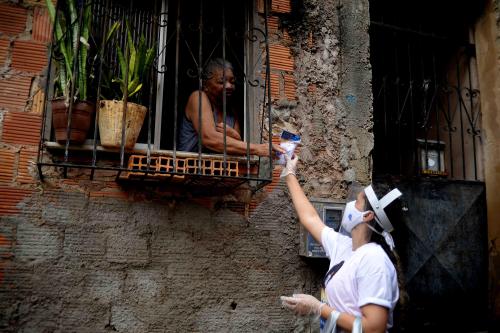
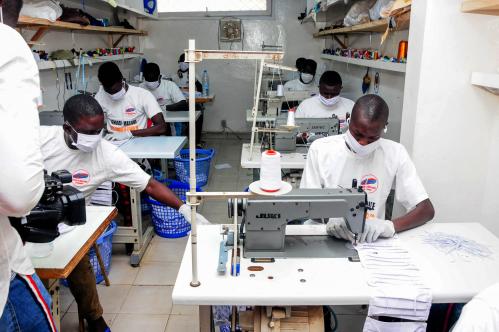

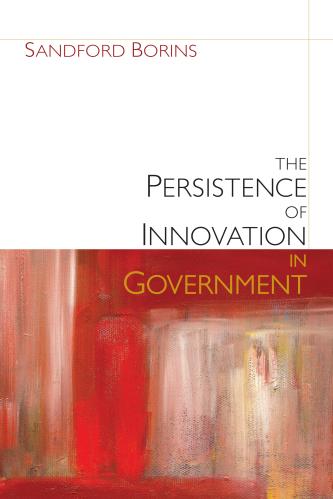
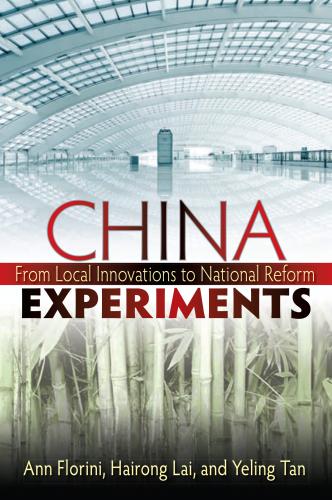
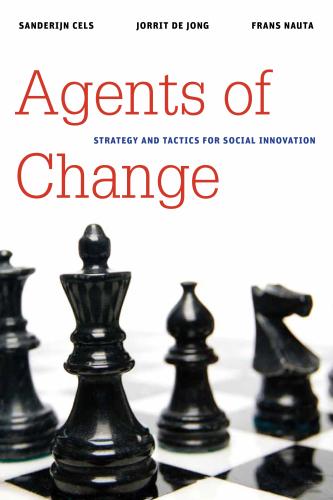



Commentary
Reimagining innovation to navigate COVID-19
October 16, 2020